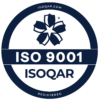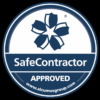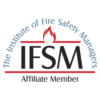Legionella Control in Domestic Systems
How do I control legionella?
To minimise the risk of exposure to Legionella bacteria, it is crucial to implement effective and straightforward control measures. Typically, regulating temperature is the most dependable method to reduce the risk of Legionella in both hot and cold water systems. Keeping hot water stored at a temperature above 60°C (140°F) and ensuring that cold water remains below 20°C (68°F) can significantly inhibit bacterial growth. Additionally, regular maintenance and cleaning of the entire water system, including tanks, pipes, and outlets, can help prevent conditions that favour bacterial proliferation.
It’s also important to ensure that water is circulated efficiently throughout the system to avoid stagnation, which can create an ideal environment for Legionella. Implementing a robust monitoring program that includes periodic testing for Legionella is vital to promptly identify and address any potential issues.
Training staff and household members on the importance of these measures and how to implement them effectively contributes to a safer environment. By staying informed and proactive, you can protect against the risks associated with Legionella and ensure a healthier, safer water system.

How can we help?
At AWB & Son Water, we specialise in creating a customised Legionella management plan tailored to your building or household requirements. Our services include preventive strategies, risk assessments, monitoring, and guidance on implementation. With our support, your business can prevent the spread of Legionella, ensuring the safety of your employees and customers. All findings and actions will be documented in our Boris reporting system.
Our expert technicians conduct comprehensive analyses to swiftly pinpoint and address any problems. Our main goal is to simplify compliance procedures, ensuring peace of mind through guaranteed adherence to regulations. By choosing AWB & Son Water for your monitoring requirements, you can trust that you are meeting your responsibilities under the Health and Safety Executive (HSE) guidelines and the Approved Code of Practice (ACOP) L8 .
To book an appointment, or to find out more, get in touch!
Our accreditations and memberships








